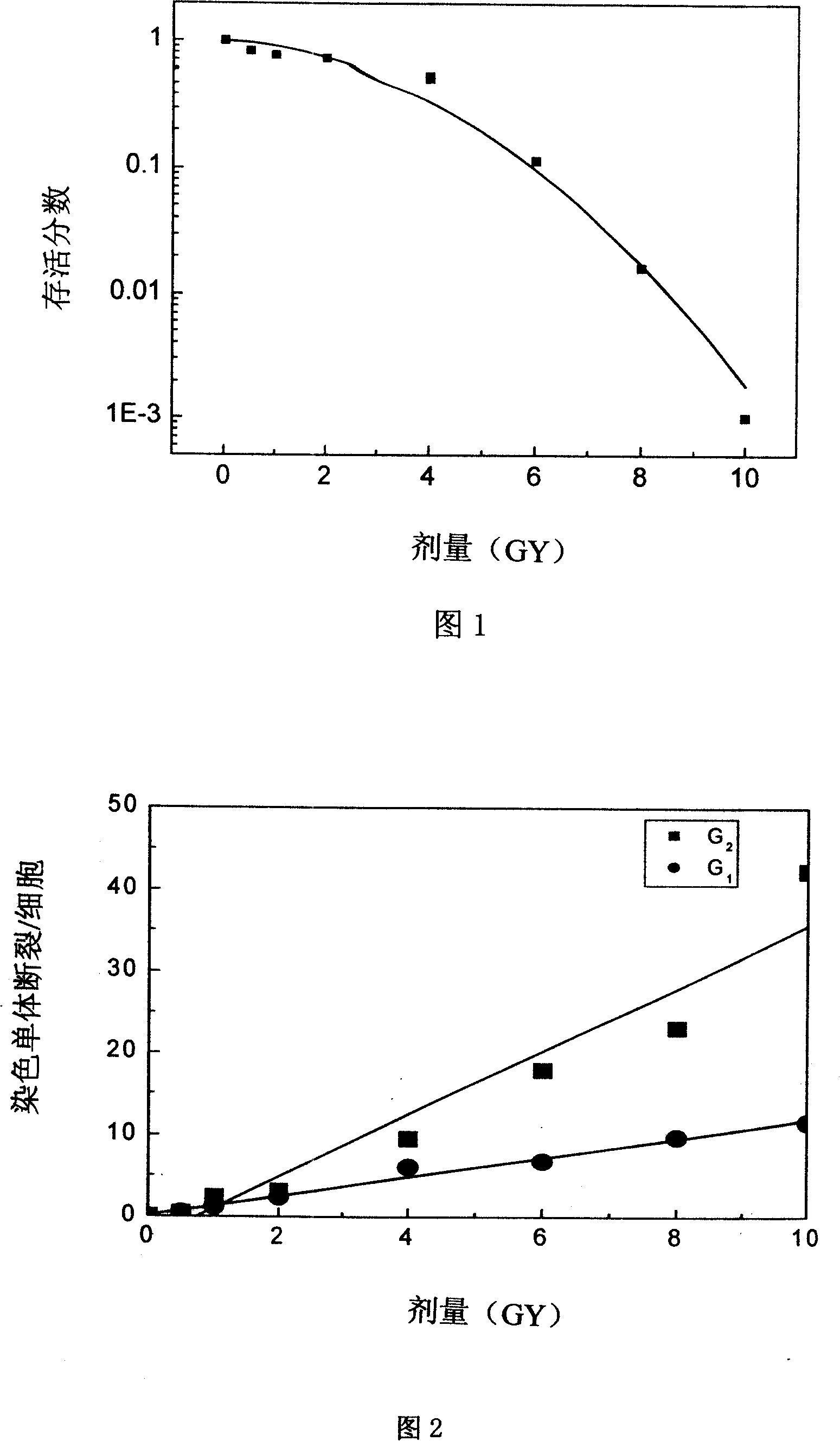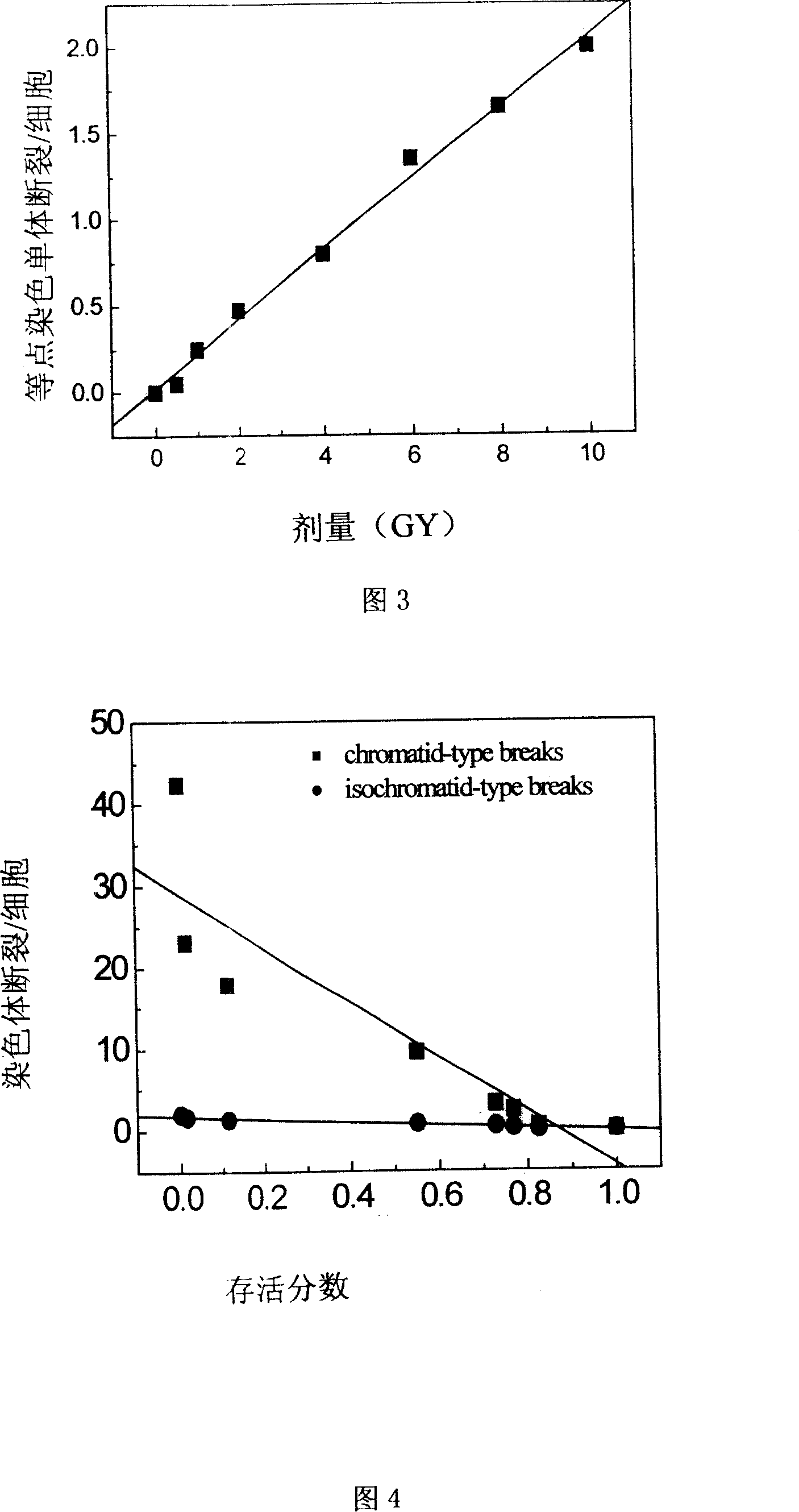Method for predicating tumor cell radiosusceptibilitiy by employing premature chromosome condensation
A technology of tumor cells and chromosomes, applied in the field of predicting the radiation sensitivity of tumor cells, to achieve the effects of accurate radiation sensitivity, small workload, and short time-consuming
- Summary
- Abstract
- Description
- Claims
- Application Information
AI Technical Summary
Problems solved by technology
Method used
Image
Examples
Embodiment 1
[0027] Embodiment 1: A method for predicting radiosensitivity of tumor cells by precocious chromosome agglutination has the following steps:
[0028] (1) Cultivate the cells and start operation when they are in the logarithmic growth phase;
[0029] Cell culture: Human liver cancer cell line SMMC-7721 (purchased from CCTCC) was incubated with RMPI-1640 medium containing 10% fetal bovine serum at 37°C, 5% CO 2 cultured in a constant temperature incubator.
[0030] (2) Add 50nmol / L precocious chromosome aggregation inducer protein serine / tyrosine phosphatase inhibitor Calyculin A 5 minutes before irradiation;
[0031] (2) irradiating the cells according to different doses;
[0032] Cell Irradiation: Human Hepatoma Cell SMMC-7721 in Exponential Growth Phase in the First Affiliated Hospital of Lanzhou Medical College 60 The γ-rays (dose rate 0.2Gy / min) produced by the Co source were irradiated.
[0033] (4) The survival rate of the cells after irradiation was measured by the clo...
Embodiment 2
[0037] The preparation method of the precocious chromosome aggregation inducer Calyculin A of the present invention comprises dissolving Calyculin-A in 100% ethanol to make a 1mM stock solution; before irradiation, it is added to the culture solution of cells to be irradiated, and the final concentration is 50nM.
Embodiment 3
[0039] The preparation method of the chromosome of the present invention, the cells are irradiated at 37 ° C, 5% CO 2 Continue to incubate for 30 minutes in a constant temperature incubator. Cells were collected, treated with 75mM KCl hypotonicity for 20 minutes, fixed with Carnot's solution, and finally suspended cells with a small amount of fixative solution, dropped into slices, dried on hot steam at 85-90°C, and stained with 5% Giemsa.
PUM
 Login to View More
Login to View More Abstract
Description
Claims
Application Information
 Login to View More
Login to View More - R&D
- Intellectual Property
- Life Sciences
- Materials
- Tech Scout
- Unparalleled Data Quality
- Higher Quality Content
- 60% Fewer Hallucinations
Browse by: Latest US Patents, China's latest patents, Technical Efficacy Thesaurus, Application Domain, Technology Topic, Popular Technical Reports.
© 2025 PatSnap. All rights reserved.Legal|Privacy policy|Modern Slavery Act Transparency Statement|Sitemap|About US| Contact US: help@patsnap.com


